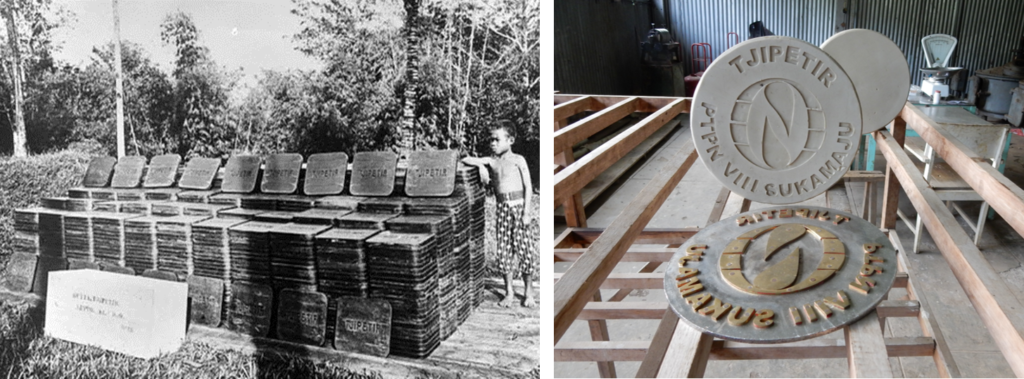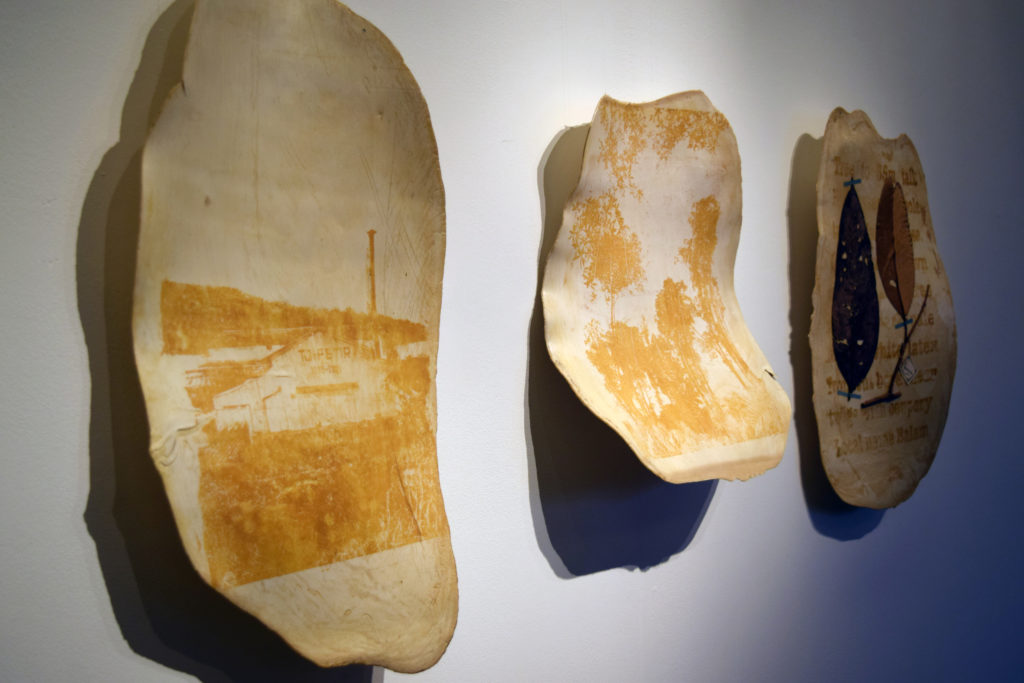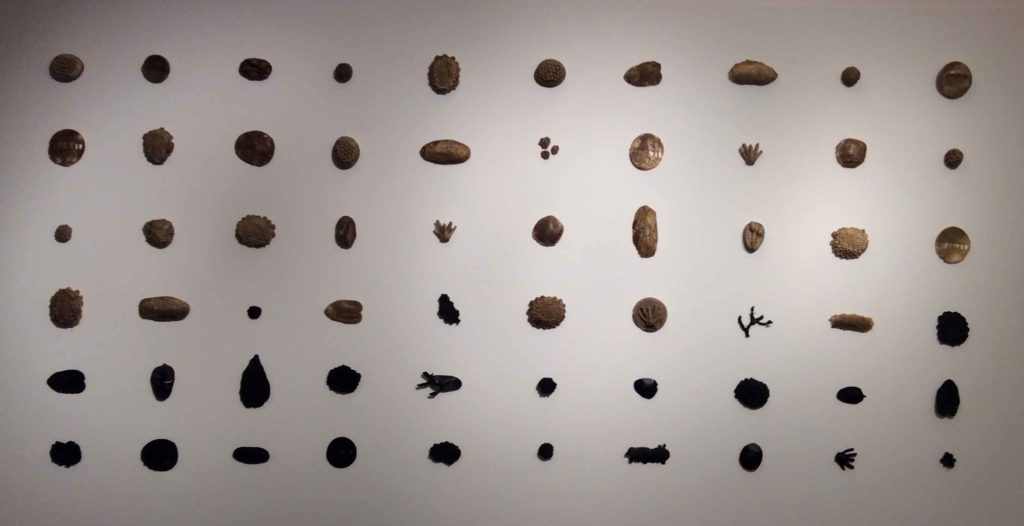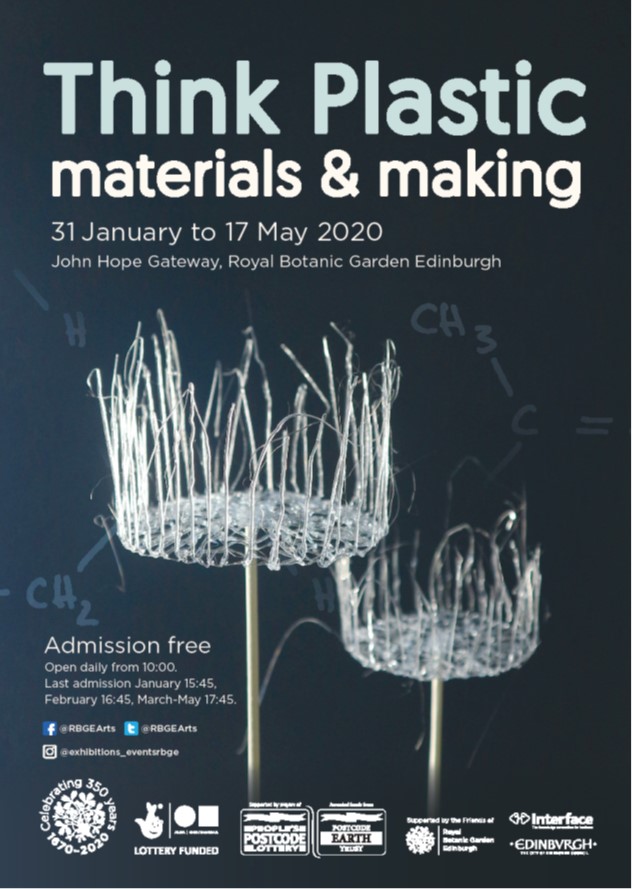The Think Plastic- materials and making exhibition which has just opened is a collaboration between artists Lorna Fraser, Carol Sinclair, Fiona Hutchison, Fiona Pilgrim and Carla Edwards and scientists, green chemist, Mike Shaver and tropical taxonomist Peter Wilkie. The exhibition encourages us to think about our relationship with plastics and the choices we make as consumers through the prisim of art.
I got involved with the exhibition through my research on tropical tree family Sapotaceae. In particular the species Palaquium gutta which produces a brilliant white latex, gutta percha, widely regarded as one of the first natural plastics and a precursor to synthetic alternatives. Within the exhibition several other types of plastics are featured and these will feature in other Botanics Stories.
In an earlier Botanics story –Tracing the source of the Tjipetir mystery – I talked about gutta percha blocks produced at the end of the 19th century from the Tjipetir plantation (modern spelling Cipetir) in Indonesia recently washing up on the shores around Britain. The current Think Plastic exhibition is helping write the next chapter in the story of gutta percha and the Tjipetir plantation.

With financial help from The Friends of RBGE some new and sustainably produced gutta percha blocks from the Tjipetir plantation have been purchased and are being used by artists Lorna Fraser and Carla Edwards to form part of the Think Plastic exhibition. These artists have been experimenting and reassessing the properties of this fascinating material and in doing so encouraging us to think about the production, degradation and sustainable use of plastic.

Lorna Fraser has been captivated by the handling of this material and the history of the plantation and has made several works combining sheets of gutta percha and images of the plantation “Plantation at Risk“, while Carla has looked afresh at its use in making jewellery “Miscellany“, something for which it was widely used during the reign of Queen Victoria.

In 1858 When demand for gutta percha was at its peak the then Regius Keeper (Director) of the RBGE, John Hutton Balfour, warned of its ‘probable exhaustion’ ‘in the countries from which it is now supplied’. One hundred and sixty two years later Balfour’s words still resonate and his message of sustainable use runs through the artwork in the exhibition encouraging visitors to think about their own choices and how these impact on the Climate Emergency and Biodiversity Crisis we face today.

